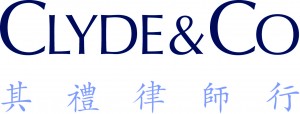24 November, 2016
In a follow-up to our article in October 2016 "Market consolidation and the regulatory review process: Which carrier will be left standing?" we consider the continued momentum of consolidation in the liner service space.
With three mergers, three planned alliances, and a bankruptcy to boot, 2016 had already marked the most transformative year in the post-containerized era. The music has not stopped yet, however; the three largest Japanese carriers, Nippon Yusen KK (NYK), Mitsui O.S.K Lines Ltd. (MOL), and Kawasaki Kisen Kaisha Ltd. (K-Line), recently announced plans to merge container operations through the formation of a joint venture by July 1, 2017, with services beginning by April 1, 2018. NYK plans to provide 38 percent of the equity with MOL and K Line each providing equal 31 percent shares. The newly formed joint venture will become the world’s sixth largest container line and enjoy seven percent of the global market share (approximately 1.4 million TEU). While terminal operations worldwide (excluding Japan) will be included in the joint venture, other components of the companies such as bulk and ferry services will remain unintegrated.
Home to nine of the ten largest container ports, Asia specifically has seen unprecedented market consolidation. Chinese controlled carriers, China Shipping and COSCO kicked off a cascading year of events in February by merging to form a single new entity, China COSCO Shipping Corp. Hanjin Shipping Co. Ltd.’s bankruptcy followed in August.
These two events inevitably played a role in sparking the third, as the Japanese shipping lines’ announcement came just two months after the world’s seventh largest carrier filed for bankruptcy, in a region where it had once played a very substantial role. As President of NYK, Tadaaki Naito put it, “[t]he purpose of becoming one . . . is so none of us become zero.”[1] Asia’s three prominent shipping countries – China, Korea, and Japan – have now all been affected by the consolidation that has reshaped the global shipping industry in the span of one year.
Seasoned veteran and former Federal Maritime Commission (FMC) Chairman Richard A. Lidinsky, Jr. described the Japanese carriers’ decision to merge as a proactive one, following Hanjin’s failure, amid a global audience. Moreover, the former Chairman noted that the strengthened formation of China Shipping COSCO Shipping Corp., hurt the individual Japanese carriers, who have never been able to gain much traction in the Chinese market, and likely spurred initial talks that began in Spring 2016.
But the Japanese shipping lines’ merger is not a revelation, as carriers are implementing survival techniques akin to corporate Darwinism. Cutting costs is the name of the game, with mergers and alliance-shifting aimed at squeezing every bit of efficiency out of redundant corporate make-ups. An unprecedented surplus in market capacity (excess tonnage) and a stagnant world-economy have made freight rates none other than a race to the bottom.
Mass consolidation also comes as no surprise to Lidinsky: “Consolidation is something we have expected for the last ten to twelve years. This is not something we should be afraid of – the market will rebound, it’s just a matter of time.” The shipping industry is certainly entering a brave new world, and as Chairman Lidinsky recognized, “a lean market has never been adverse to the interests of the shipper.”
The nuts and bolts of the merger will essentially require worldwide regulatory approval, including that of the United States’ Department of Justice (DOJ) Antitrust Division, and the Federal Trade Commission (FTC). The DOJ/FTC Horizontal Merger Guidelines detail the techniques utilized to determine whether a merger will reduce competition. The Guidelines explain that mergers “should not be permitted to create, enhance, or entrench market power or to facilitate its exercise . . . . A merger enhances market power if it is likely to encourage one or more firms to raise price, reduce output, diminish innovation, or otherwise harm customers as a result of diminished competitive constraints or incentives.”[2]
The Japanese merger emulates an all too common narrative. Like others, the merger tracks previous plans to realign, and combine resources through a newly-formed alliance. “THE Alliance” was originally slated to include six carriers, including Hanjin, Hapag-Lloyd, UASC, Yang Ming, MOL, K-Line, and NYK Line. Now the alliance will include just three, following the merger of Hapag-Lloyd and UASC, and the now dominant presence of the Japanese joint venture. The former five carriers will now partner with just Yang Ming, one of the few Asian shipping lines left completely intact.
A horizontal merger, such as the Japanese joint venture, does not fall within the regulatory scope of the FMC, as the Commission – through the enforcement of the Shipping Act of 1984, as amended – exclusively evaluates the anti-competitive efficacy of proposed ocean carrier agreements. It is undeniable, however, that market consolidation (and concentration) reduces competition, which will inevitably complicate the approval and monitoring process of agreements moving forward.
The long-term question ultimately is, how much consolidation is too much? “Only time will tell,” noted the former Chairman, “but one thing is for sure, there is a tipping point at which decreased market diversification [i.e. fewer carriers] could negatively impact the shipper/consumer.” The FMC, given its view of itself as principally a consumer protection agency, will inevitably view the market through the lens of the shipper. Regardless of perspective, consolidation, alone, may not normalize freight rates unless the overcapacity saturating the market is similarly resolved.
[1] Leo Lewis and Kana Inagaki, Japanese companies bury the hatchet to survive, Financial Times, Nov. 3, 2016.
[2] U.S. Dep't of Justice & Fed. Trade Comm'n, Horizontal Merger Guidelines (2010), available at https://www.ftc.gov/sites/default/files/attachments/merger-review/ I 00819hmg.pdf.
For further information, please contact:
Ik Wei Chong, Partner, Clyde & Co
ikwei.chong@clydeco.com

.jpg)




